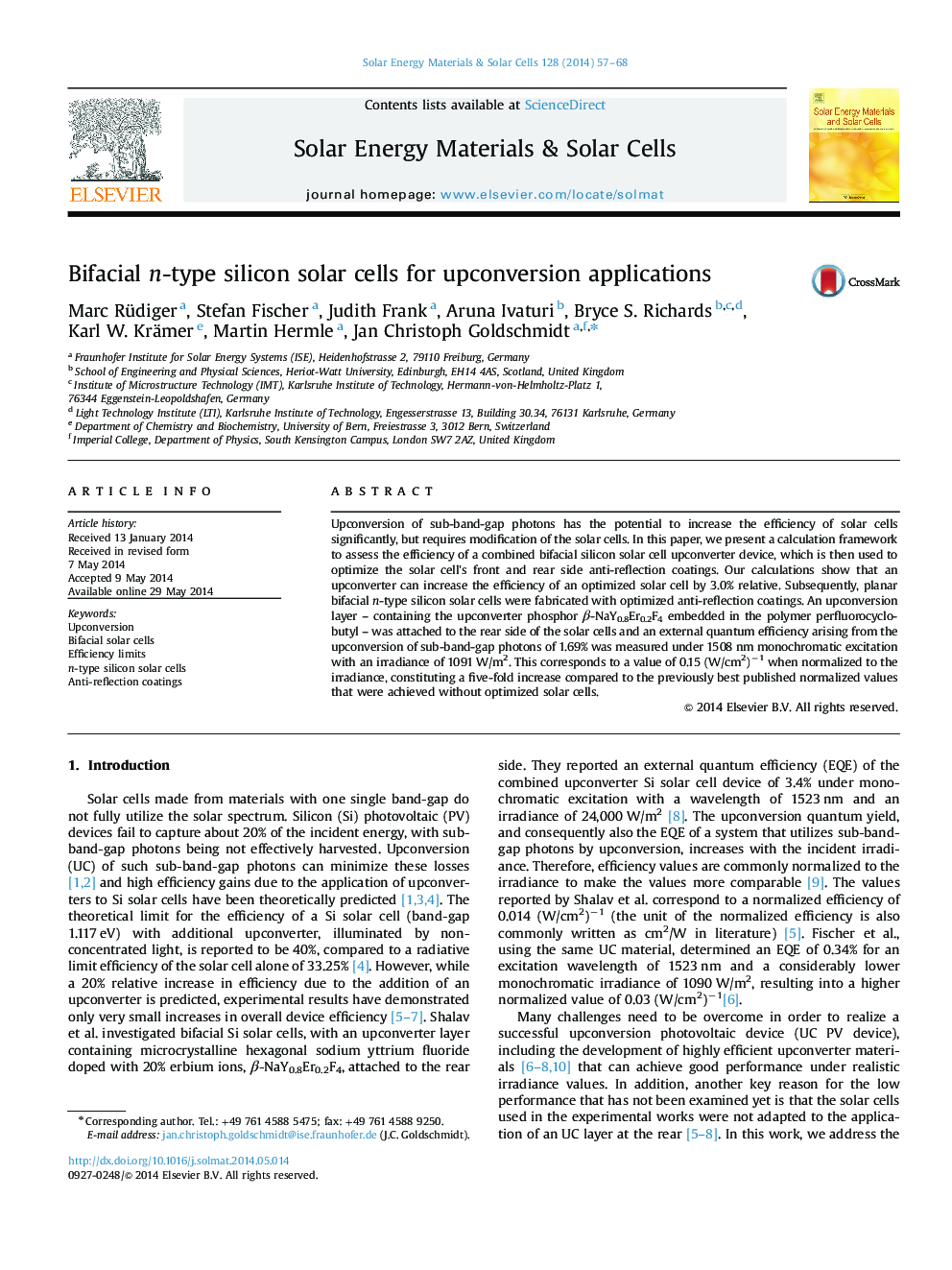| کد مقاله | کد نشریه | سال انتشار | مقاله انگلیسی | نسخه تمام متن |
|---|---|---|---|---|
| 77970 | 49312 | 2014 | 12 صفحه PDF | دانلود رایگان |

• Bifacial Si solar cells optimized for highest device efficiency with upconversion.
• Simulation tool to assess device efficiency in conjunction with upconverter.
• n-type Si solar cell with broad-band double layer anti-reflection coating on front.
• EQE of upconverter solar cell devices measured.
• Five-fold increase in EQE compared to non-optimized solar cells.
Upconversion of sub-band-gap photons has the potential to increase the efficiency of solar cells significantly, but requires modification of the solar cells. In this paper, we present a calculation framework to assess the efficiency of a combined bifacial silicon solar cell upconverter device, which is then used to optimize the solar cell׳s front and rear side anti-reflection coatings. Our calculations show that an upconverter can increase the efficiency of an optimized solar cell by 3.0% relative. Subsequently, planar bifacial n-type silicon solar cells were fabricated with optimized anti-reflection coatings. An upconversion layer – containing the upconverter phosphor β-NaY0.8Er0.2F4 embedded in the polymer perfluorocyclobutyl – was attached to the rear side of the solar cells and an external quantum efficiency arising from the upconversion of sub-band-gap photons of 1.69% was measured under 1508 nm monochromatic excitation with an irradiance of 1091 W/m2. This corresponds to a value of 0.15 (W/cm2)−1 when normalized to the irradiance, constituting a five-fold increase compared to the previously best published normalized values that were achieved without optimized solar cells.
Journal: Solar Energy Materials and Solar Cells - Volume 128, September 2014, Pages 57–68